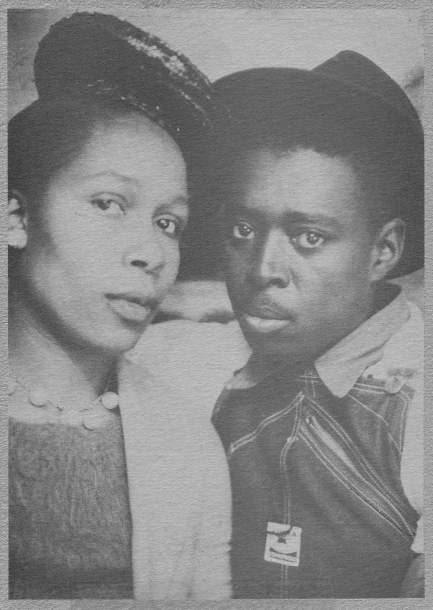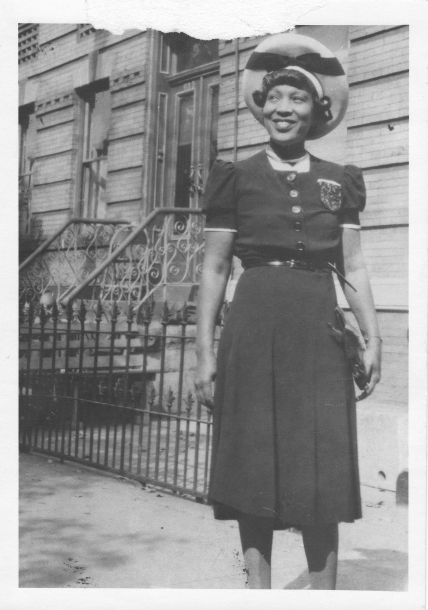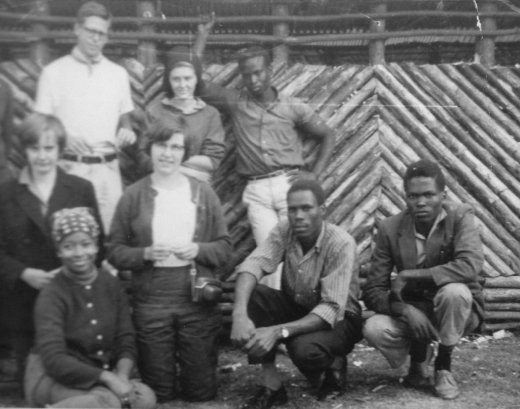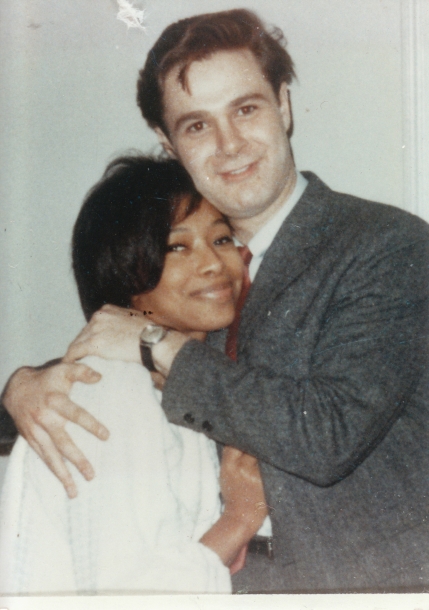In Search of Our Mothers' Gardens (45 page)
Read In Search of Our Mothers' Gardens Online
Authors: Alice Walker

To the extent that black women dissociate themselves from the women's movement, they abandon their responsibilities to women throughout the world. This is a serious abdication from and misuse of radical black herstorical tradition: Harriet Tubman, Sojourner Truth, Ida B. Wells, and Fannie Lou Hamer would not have liked it. Nor do I.
Before the coming of the Europeans, for hundredsâperhaps thousandsâof years, the Ohlones rose before dawn, stood in front of their tule houses, and facing the east shouted words of greeting and encouragement to the rising sun. They shouted and talked to the sun because they believed that the sun was listening to them, that it would heed their advice and pleas. They shouted to the sun because ⦠they felt that the sun had “a nature very much like their own.”
The Ohlones were very different from us. They had different values, technologies, and ways of seeing the world. These differences are striking and instructive. Yet there is something that lies beyond differences. For as we stretch and strain to look through the various windows into the past, we do not merely see a bygone people hunting, fishing, painting their bodies, and dancing their dances. If we look long enough, if we dwell on their joy, fear, and reverence, we may in the end catch glimpses of almost forgotten aspects of our own selves.
âMalcolm Margolin,
The Ohlone Way: Indian Life in the San Francisco-Monterey Bay AreaOnly you and I can help the sun rise each coming morning
If we don't it may drench itself out in sorrow.
âJoan Baez,
album notes to “Farewell Angelina”
From my journal, Jackson, Mississippi, June 15, 1972:
If one lives long enough, nothing will seem very important,
or the past very painful. (This will seem truer on some days than on others.)
Rebecca said today: “I can cook soup, and eggs, and windows!”
She also said, while drawing letters on the kitchen table: “A, D, and O.” Then, “Oh-oh, the O is upside down!”
I feel very little guilt about the amount of time “taken from my daughter” by my work. I was amazed that she could exist and I could read a book at the same time. And that she easily learned that there are other things to enjoy besides myself. Between an abstracted, harassed adult and an affectionate sitter or neighbor's child who can be encouraged to return a ball, there is no contest.
There was a day when, finally, after five years of writing Meridian (a book “about” the Civil Rights Movement, feminism, socialism, the shakiness of revolutionaries, and the radicalization of saintsâthe kind of book out of the political sixties that white feminist scholar Francine du Plessix Gray declared recently in the New York Times Book Review did not exist), I felt a pang.
I wrote this self-pitying poem:
Now that the book is finished,
now that I know my characters will live,
I can love my child again.
She need sit no longer
at the back of my mind
the lonely sucking of her thumb
a giant stopper in my throat.
But this was as much celebration as anything. After all, the book
was
finished, the characters
would
live, and of course I'd loved my daughter all along. As for “a giant stopper in my throat,” perhaps it is the fear of falling silent,
mute,
that writers have from time to time. This fear is a hazard of the work itself, which requires a
severity
toward the self that is often overwhelming in its discomfort, more than it is the existence of one's child, who, anyway, by the age of seven, at the latest, is one's friend, and can be told of the fears one has, that she can, by listening to one, showing one a new dance step, perhaps, sharing a coloring book, or giving one a hug, help allay.
In any case, it is not my child who tells me: I have no femaleness white women must affirm. Not my child who says: I have no rights black men must respect.
It is not my child who has purged my face from history and herstory and left mystory just that, a mystery; my child loves my face and would have it on every page, if she could, as I have loved my own parents' faces above all others, and have refused to let them be denied, or myself to let them go.
Not my child, who in a way
beyond
all this, but really of a piece with it, destroys the planet daily, and has begun on the universe.
We are together, my child and I. Mother and child, yes, but
sisters
really, against whatever denies us all that we are.
For a long time I had this sign, which I constructed myself, deliberately, out of false glitter, over my desk:
Dear Alice,
Virginia Woolf had madness;
George Eliot had ostracism,
somebody else's husband,
and did not dare to use
her own name.
Jane Austen had no privacy
and no love life.
The Brontë sisters never went anywhere
and died young
and dependent on their father.
Zora Hurston (ah!) had no money
and poor health.
You have Rebeccaâwho is
much more delightful
and less distracting
than any of the calamities
above.
*Muriel Rukeyser Day, Sarah Lawrence College, December 9, 1979. In the work of this essay, and beyond this essay, I am indebted to the courageous and generous spirits of Tillie Olsen, Barbara Smith, and Gloria Steinem.âAW.
**Except for this plate and the choice of Sacajawea (who led Lewis and Clark on their Western expedition) as the subject of the Native American plate, I loved Chicago's art and audacity.
1979
Alice Walker (b. 1944), one of the United States' preeminent writers, is an award-winning author of novels, stories, essays, and poetry. Walker was the first African-American woman to win the Pulitzer Prize for fiction, which she won in 1983 for her novel
The Color Purple
, also a National Book Award winner. Walker has also contributed to American culture as an activist, teacher, and public intellectual. In both her writing and her public life, Walker has worked to address problems of injustice, inequality, and poverty.
Walker was born at home in Putnam County, Georgia, on February 9, 1944, the eighth child of Willie Lee Walker and Minnie Tallulah Grant Walker. Willie Lee and Minnie Lou labored as tenant farmers, and Minnie Lou supplemented the family income as a house cleaner. Though poor, Walker's parents raised her to appreciate art, nature, and beauty. They also taught her to value her education, encouraging her to focus on her studies. When she was a young girl, Alice's brother accidentally shot her in the eye with a BB, leaving a large scar and causing her to withdraw into the world of art and books. Walker's dedication to learning led her to graduate from her high school as valedictorian. She was also homecoming queen.
Walker began attending Spelman College in Atlanta in 1961. There she formed bonds with professors such as Staughton Lynd and Howard Zinn, teachers that would inspire her to pursue her talent for writing and her commitment to social justice. In 1964 she transferred to Sarah Lawrence College, where she completed a collection of poems in her senior year. This collection would later become her first published book,
Once
(1965). After college, Walker became deeply engaged with the civil rights movement, often joining marches and voter registration drives in the South. In 1965 she met Melvyn Rosenman Leventhal, a civil rights lawyer, whom she would marry in 1967 in New York. The two were happy, before the strain of being an interracial couple in Mississippi caused them to separate in 1976. They had one child, Rebecca Grant Walker Leventhal.
In the late sixties through the seventies, Walker produced several books, including her first novel,
The Third Life of Grange Copeland
(1970), and her first story collection,
In Love & Trouble
(1973). During this time she also pursued a number of other ambitions, such as working as an editor for
Ms.
magazine, assisting anti-poverty campaigns, and helping to bring canonical novelist Zora Neale Hurston back into the public eye.
With the 1982 release of her third novel,
The Color Purple
, Walker earned a reputation as one of America's premier authors. The book would go on to sell fifteen million copies and be adapted into an Academy Awardânominated film by director Steven Spielberg. After the publication of
The Color Purple
, Walker had a tremendously prolific decade. She produced a number of acclaimed novels, including
You Can't Keep a Good Woman Down
(1982),
The Temple of My Familiar
(1989), and
Possessing the Secret of Joy
(1992), as well as the poetry collections
Horses Make a Landscape Look More Beautiful
(1985) and
Her Blue Body Everything We Know
(1991). During this time Walker also began to distinguish herself as an essayist and nonfiction writer with collections on race, feminism, and culture, including
In Search of Our Mothers' Gardens
(1983) and
Living by the Word
(1988). Another collection of poetry,
Hard Times Require Furious Dancing
, was released in 2010, followed by her memoir,
The Chicken Chronicles
, in the spring of 2011.
Currently, Walker lives in Northern California, and spends much of her time traveling, teaching, and working for human rights and civil liberties in the United States and abroad. She continues to write and publish along with her many other activities.

Alice's parents, Minnie Tallulah Grant and Willie Lee Walker, in the 1930s. Willie Lee was brave and hardworking, and Minnie Lou was strong, thoughtful, and kindâand just as hardworking as her husband. Alice remembers her mother as a strong-willed woman who never allowed herself or her children to be cowed by anyone. Alice cherished both of her parents “for all they were able to do to bring up eight children, under incredibly harsh conditions, to instill in us a sense of the importance of education, for instance, the love of beauty, the respect for hard work, and the freedom to be whoever you are.”

Harlem Renaissance writer Zora Neale Hurston during her days in New York City. Hurston, who fell into obscurity after her death, had a profound influence on Walker. Indeed, Walker's 1975 essay, “In Search of Zora Neale Hurston,” played a crucial role in resurrecting Hurston's reputation as a major figure in American literature. Walker paid further tribute to her “literary aunt” when she purchased a headstone for Hurston's grave, which had gone unmarked for over a decade. The inscription on the tombstone reads, “A Genius of the South.”

Alice (front) in Kenya in 1965. She traveled there to help build the school pictured in the background as part of the Experiment in International Living Program. It was here that Walker first witnessed the practice of female genital mutilation, a practice that she has since worked to eradicate.

Walker with her former husband, Melvyn Leventhal, a Brooklyn native. The couple met in Mississippi and bonded over their mutual involvement in the struggle for civil rightsâhe as a budding litigator for the NAACP Legal Defense and Education Fund, she as one of the organization's workers responsible for taking depositions from disenfranchised black voters. Despite disapproval from their respective families, Alice and Melvyn wed in New York City in 1967. They then returned to Mississippi, where they were often subjected to threats from the Ku Klux Klan. Eventually the pressures of living in the violent, segregated state, coupled with their divergent career paths, caused the pair to drift apart. They divorced amicably in 1976.
